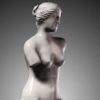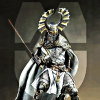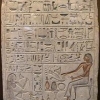Leaderboard
Popular Content
Showing content with the highest reputation on 2014-04-02 in all areas
-
Position: Music composer. Do you understand that Wildfire Games is a non-commercial project, work for 0 A.D. is volunteer, and work is done for free? Yes Do you agree to distribute all your work for Wildfire Games under Creative Commons Attribution Share-Alike license? Yes Name: Augustin Ledanseur. Email: aledanseur@gmail.com Location: France, city: Rennes. Availability: 7-10 hours per week. I think it won't change so soon. Age: 19. Occupation: I'm studying Musicology in the University of Rennes. Skills and Experience: I started to play the piano and the guitar very young. I have been learning in two conservatoires. I know all the fundamentals of classical music composition and I have worked on a lot of different other styles (jazz formation, rock, blues, funk and contemporary music). I have a very good ear and a huge imagination. I have always been attracted by the composition. When I am listening to something, I automatically have pictures, stories, atmospheres coming to my mind. So I started to compose music very young, because I always loved it. Recently I started to compose for video-games, but I don't yet had the occasion to participate to anything very serious. Motivation: Music is my passion. And I want it to become my work. If I want to make music for video games, it's because I think that's a field I can be really good in. I am not really interested by money, I would just like to be part of a project. To be a member of a team, and create something with this team. Give to this team, and to this project everything I can give to it to create something that people will enjoy. Money is a cool thing, but knowing that people loved something you did is far better. Personality: I am usually happy, I am very respectful, I am always thinking about a lot of things, I am open minded, creative and adaptable. Short Essay: About a month ago, a friend of mine (who knows my ambitions and heard my musics) told me about someone from his engineering school who is working with WildFire's team. Then, I saw that you where looking for people. So it was obvious for me that I had to try to join the project, because this is exactly the kind of project I want to bring something in. I think I would learn a lot of thing working with you and I am sure it would be a great experience. I need to be part of such a project, because this is all I want to do. Interests and Hobbies: I like to record songs, play with other musicians, I do sports, I love to cook and of course I play a lot of video games. Staff: A friend told me about a someone who is in the team, but I don't know his name. Community: I follow a few groups on twitter and Facebook. Favorite Game: Right now I'm playing Diablo 3, but I love all the Diablos from the first one. I also loved Half-Life, Half-Life 2 and the two Portals. I also love and find very interesting the Elder Scrolls. In another style, I always loved Age Empire, Stronghold Crusader and games like this.. Work Examples: Before moving to Rennes, I have been member of a few bands, I often was the leader. But now I decided to take time to work alone, which is the occasion to make another kind of production. I published a few tracks on sound cloud. But a lot of publications are not a finished work. I give you a link hear: https://soundcloud.com/augustin-ledanseur2 points
-
Even if it would do a better job there are a few reasons why it is just no option to switch: 1. It would mean that you can throw 10+ years of development in the garbage collector and simply everything needs to be rewritten. Basically starting a new game. 2. Unreal Engine 4 is a very computer-power consuming program, especially since a lot of the fan base are running 0 A.D. on older hardware. So you would abandon a large part of the community (even me, I'm not too sure my both pc's are capable of running UE4 fluently). 3. It doesn't match with open source to go with an proprietary engine. And it would get harder for newbies to get involved in 0 A.D.'s development, since they need to get their hands on UE4 somehow (I don't think Epic Games will give free to use packages to redistribute among all of us). Even though it would be cool to have such advanced graphics/physics, it is just undo-able. It is better to improve the existing engine to look better, without consuming more resources. @Energy conservation (guess it is better explained in the movie posted a little above): It simply makes sure that the specular reflection and diffuse reflection doesn't exceed the incoming amount of light. I just found a nice paper about making Phong's light model more physically plausible by adding energy conservation and making it reciprocal. http://users.tricity.wsu.edu/~bobl/personal/mypubs/1993_plausible.pdf Edit: it is explained in the movie @15:30.2 points
-
Ah I see now I did not mean any disrespect in anyway. If anything this would be a separate project from 0AD if push came to shove. Unreal currently comes with an Strategy sample game. It is more of a tower defence game (The Sample Strategy Game) than anything but It provides a good core framework for making a RTS game like 0 AD. The reason I put this forward is the following - 1. No need to worry about working on the Engine (Epic Games is literally working with the community to evolve their engine) 2. A Unified Pipeline - Use the .FBX file (Available in Blender, 3DS Max, Maya, Modo, Cinema 4D, etc.) to export animations and Static objects. 3. Source code access - Something you do not like? You would be able to change it providing you have the C++ knowledge. 4. More developers to develop 0A.D. - Unreal 4 is attracting a lot of developers both programmers, artists, and people in between. 5. You would be able to develop for Windows, Mac OSX and Linux as well as Android, IOS, and HTML5 enabled Browsers. 7. Easy to use asset workflow. 8. 20 Bucks for Source code access! That is literally a steal! It is not open source but it is possibly as open as unreal is going to get to open source. I am of the strong opinion that nothing should be put aside without it being looked at first. Which is happening here. What if Unreal does the job better than the current engine? But this is just me. I am willing to help out with 0AD regardless of the outcome.2 points
-
With recent games such as Red Dead Redemption, Left 4 Dead 2, and The Last of Us being hugely successful, we have decided to change the overall direction of 0 A.D. so that it can appeal to a wider audience. We have many gameplay changes planned, such as removing the Roman faction and replacing it with an AI controlled horde of zombies. This transformation will probably take a few weeks to complete. The name Apocalypse of the Dead works well with our current title 0 A.D. because it means we don’t have to purchase new domain names. The ‘0’ therefore signifies the start of the apocalypse. Note: All comments in this topic may be moderated.1 point
-
Keeping an eye on this, cause we can use this in the Rome project too And nice work Lion that research is very informative.1 point
-
http://en.wikipedia.org/wiki/Corporate_identity I know we aren't here to sell and buy products or services, but even the UN have a standar with their logo and colors, they provide a guidelines to how adapts to environment m and how manage media and communication stuff.( my point here is show how manage a logo or a mark or a branding) example Aristeia, or the Council of Modders. --------------------------- Definitions Brand management is a communication function that includes analysis and planning on how that brand is positioned in the market, which target public the brand is targeted at, and maintaining a desired reputation of the brand. Developing a good relationship with target publics is essential for brand management. Tangible elements of brand management include the product itself; look, price, the packaging, etc. The intangible elements are the experience that the consumer takes away from the brand, and also the relationship that they have with that brand. A brand manager would oversee all of these things. Corporate identity. Corporate identity is often viewed as being composed of three parts: Corporate design (logos, uniforms, corporate colours etc.)( not apply to us all)Corporate communication (advertising, public relations, information, etc.)(apply if we in a hypothetical case do it an advertising and merchandising, conference, information about us...etc)Corporate behavior (internal values, norms, etc.)(internal rules)In a recent monograph on Chinese corporate identity (Routledge, 2006), Peter Peverelli, proposes a new definition of corporate identity, based on the general organization theory proposed in his earlier work, in particular Peverelli (2000). This definition regards identity as a result of social interaction: Corporate identity is the way corporate actors (actors who perceive themselves as acting on behalf of the company) emake sense of their company in ongoing social interaction with other actors in a specific context. It includes shared perceptions of reality, ways-to-do-things, etc., and interlocked behaviour. In this process the corporate actors are of equal importance as those others; corporate identity pertains to the company (the group of corporate actors) as well as to the relevant others; Best Practices The following four key brand requirements are critical for a successful corporate identity strategy. Differentiation. In todays highly competitive market, brands need to have a clear differentiation or reason for being. What they represent needs to stand apart from others in order to be noticed, make an impression, and to ultimately be preferred. Relevance. Brands need to connect to what people care about out in the world. To build demand, they need to understand and fulfill the needs and aspirations of their intended audiences. ( our fan base) Coherence. To assure credibility with their audiences, brands must be coherent in what they say and do. All the messages, all the marketing communications, all the brand experiences, and all of the product delivery need to hang together and add up to something meaningful. Esteem. A brand that is differentiated, relevant and coherent is one that is valued by both its internal and external audiences. Esteem is the reputation a brand has earned by executing clearly on both its promised and delivered experience.---------------- now the interesting about create solid logos --------------------------- That my point Visual identity Corporate visual identity plays a significant role in the way an organization presents itself to both internal and external stakeholders. In general terms, a corporate visual identity expresses the values and ambitions of an organization, its business, and its characteristics. Four functions of corporate visual identity can be distinguished. Three of these are aimed at external stakeholders. First, a corporate visual identity provides an organisation with visibility and "recognizability".[3] For virtually all profit and non-profit organisations, it is of vital importance that people know that the organization exists and remember its name and core business at the right time. Second, a corporate visual identity symbolizes an organization for external stakeholders, and, hence, contributes to its image and reputation (Schultz, Hatch and Larsen, 2000). Van den Bosch, De Jong and Elving (2005) explored possible relationships between corporate visual identity and reputation, and concluded that corporate visual identity plays a supportive role in corporate reputations. Third, a corporate visual identity expresses the structure of an organization to its external stakeholders, visualising its coherence as well as the relationships between divisions or units. Olins (1989) is well known for his "corporate identity structure", which consists of three concepts: monolithic brands for companies which have a single brand, identity in which different brands are developed for parts of the organization or for different product lines, and an endorsed identity with different brands which are (visually) connected to each other. Although these concepts introduced by Olins are often presented as the corporate identity structure, they merely provide an indication of the visual presentation of (parts of) the organization. It is therefore better to describe it as a "corporate visual identity structure". A fourth, internal function of corporate visual identity relates to employees' identification with the organization as a whole and/or the specific departments they work for (depending on the corporate visual strategy in this respect). Identification appears to be crucial for employees, and corporate visual identity probably plays a symbolic role in creating such identification. The definition of the corporate visual identity management is: Corporate visual identity management involves the planned maintenance, assessment and development of a corporate visual identity as well as associated tools and support, anticipating developments both inside and outside the organization, and engaging employees in applying it, with the objective of contributing to employees' identification with and appreciation of the organization as well as recognition and appreciation among external stakeholders. Special attention is paid to corporate identity in times of organizational change. Once a new corporate identity is implemented, attention to corporate identity related issues generally tends to decrease. However, corporate identity needs to be managed on a structural basis, to be internalized by the employees and to harmonize with future organizational developments. Efforts to manage the corporate visual identity will result in more consistency and the corporate visual identity management mix should include structural, cultural and strategic aspects.[5] Guidelines, procedures and tools can be summarized as the structural aspects of managing the corporate visual identity. However, as important as the structural aspects may be, they must be complemented by two other types of aspects. Among the cultural aspects of corporate visual identity management, socialization i.e., formal and informal learning processes turned out to influence the consistency of a corporate visual identity. Managers are important as a role model and they can clearly set an example. This implies that they need to be aware of the impact of their behavior, which has an effect on how employees behave. If managers pay attention to the way they convey the identity of their organization, including the use of a corporate visual identity, this will have a positive effect on the attention employees give to the corporate visual identity. Further, it seems to be important that the organization communicates the strategic aspects of the corporate visual identity. Employees(volunteers) need to have knowledge of the corporate visual identity of their organization not only the general reasons for using the corporate visual identity, such as its role in enhancing the visibility and recognizability of the organization, but also aspects of the story behind the corporate visual identity. The story should explain why the design fits the organization and what the design in all of its elements is intended to express. Corporate colours (or company colours) are one of the most instantly recognizable elements of a corporate visual identity and promote a strong non-verbal message on the company's behalf. Examples of corporate colours: Red for Coca-ColaBlue for IBM, nicknamed "Big Blue" Brown for UPS, "What can Brown do for you" Light Teal for Korean AirHistory of importance have a branding or strong graphic identity: Nearly 7,000 years ago, Transylvanian potters inscribed their personal marks on the earthenware they created. If one potter made better pots than another, naturally, his mark held more value than his competitors. Religions created some of the most recognized identity marks: the Christian cross, the Judaic Star of David, and the Islamic crescent moon. In addition, Kings and nobles in medieval times had clothing, armor, flags, shields, tableware, entryways, and manuscript bindings that all bore coats of arms and royal seals. The symbols depicted a lords lineage, aspirations, familial virtues, as well as memoirs to cavalry, infantry, and mercenaries of who they were fighting for on the battlefields.[6] A trademark became a symbol of individuals professional qualifications to perform a particular skill by the 15th century. For example, the Rod of Asclepius on a physician's sign signified that the doctor was a well-trained practitioner of the medical arts. Simple graphics such as the caduceus carried so much socioeconomic and political weight by the 16th century, that government offices were established throughout Europe to register and protect the growing collection of trademarks used by numerous craft guilds.[6] The concept of visually trademarking ones business spread widely during the Industrial Revolution. The shift of business in favor of non-agricultural enterprise caused business, and corporate consciousness, to boom. Logo use became a mainstream part of identification, and over time, it held more power than being a simple identifier. Some logos held more value than others, and served more as assets than symbols.[7] Logos are now the visual identifiers of corporations. They became components of corporate identities by communicating brands and unifying messages. The evolution of symbols went from a way for a king to seal a letter, to how businesses establish their credibility and sell everything from financial services to hamburgers.[7] Therefore, although the specific terms "corporate image" and "brand identity" didnt enter business or design vocabulary until the 1940s, within twenty years they became key elements to business success.[6] -------------------- [the designer tools ] Brand manual A brand guide (or brand manual, standards guide and many other similar phrases) is a document in which describes how to properly convey an entity's brand identity. It usually contains a rundown of the various elements that make up the identity as well as guidelines about how they should be used, and what uses are not allowed. As awareness has grown over the need to use a consistent brand application, brand manuals are today created for more or less all major brands. Many of them are however not available to he public, and are only shared internally. Issues Brand guides tend to include several recurring segments, all involving issues that may face the person who is about to apply the brand identity. Most logos come in more than one variant. The brand manual lays out which variant should be used in which situation. One of the more common problems is what to do with logos that use a designated color. If color printing isn't possible, should one use a grayscale version or a black one? This question gets more advanced if the logo has two colors or more. If, again, color print isn't possible, shuold you use grayscale to distinguish the parts of the logo that have different colors in the full-color version, or should the entire logo be black? As technology has progressed more advanced logos with gradients and bevels have increased in popularity. If one uses such a logo, one may still have to maintain a simpler version to use when high quality print isn't possible. When a logo is seen in its "pure" form it is usually seen against an all white background. When applied it is often possible that the logo will be used against a colored or photographic background, and applying the standard version of the logo isn't always ideal. There are many ways to deal with this issue. Some manuals ban use of the logo against all other backgrounds than white ones. Some allow certain kinds of background, while banning those that upset the logo or makes it hard to see. Many logos have a negative or white version to be used against darker backgrounds, and some provide a special version with white outlines for this purpose. Some logos which include both a symbol and type come in multiple versions with different compositions, including versions with all elements stacked on top of each other or in a horizontal composition. Brand manuals usually enforce a "protective field" of blank space around the logo so it stays separate from other design elements. Boundaries are also set on how creative one can be with the logo outside the brand manual. You are rarely allowed to distort the logo by stretching it, changing to colours, change the composition of logo parts etcetera outside the variaions laid out in the manual. Many manuals also contain guidelines specific to he field in which the logo should be used. This may lay out applications on clothing, on screen, on letter heads, on business cards etcetera. Brand identities increasingly include more graphic elements than just the logo, and these are usually presented in the manual. Many manuals also includes a color palette with approved colors, and guidelines for photography. Sometimes the manual contains material not related design at all, instead describing the brand identity in words that the identity should aspire to fulfill. Examples : Ubuntu. http://design.canonical.com/brand/1.%20Ubuntu%20brand%20introduction.pdf http://design.canonical.com/brand/2.%20Ubuntu%20brandmark%20and%20circle%20of%20friends.pdf Isotype (International System of TYpographic Picture Education) is a method of showing social, technological, biological and historical connections in pictorial form. It was first known as the Vienna Method of Pictorial Statistics In design a isotope is a image that can be the logo itself or part of it. This one most importance of this, protect our logo from incorrect use. http://design.canonical.com/brand/6.%20Ubuntu%20type%20styles%20and%20formats.pdf Even use a corporative typography or fonts. Conclusion. Conclusion In the creation of your brand bible, think of how it will be used. This document is a reference material and guide for how the company should be portrayed to the public. Include examples and specifics. Keep the guidelines direct and simple but also think about how restricting they can be. Guidelines that are too strict can limit creativity and new designs; guidelines that are too loose may result in multiple or disjointed brand identities. Use your brand bible as starting point and establish a culture around it that allows designers room for creative thought while maintaining the aura of the brand in a variety of projects. Remember the ultimate goal of the book is to create a distinct and unified presence for your brand.1 point
-
1 point
-
Hmm, I can't listen to your work examples. I can see them, but clicking play doesn't work for some reason (maybe soundcloud is temporarily down). Anyway, I don't think you're applying for "sound lead". We split the "sound" and "music" parts of the game. Sound is about sound effects (battle sounds, shouts, animal sounds ...) while music is about the background tracks (in the menus and in the game). We have an active composer (Omri Lahav). He's quite busy but still manages to create new tracks every now and then. But you can either try to cooperate with Omri, or work on yourself. If you make good tracks (note that this includes the composing and the recording of the music), those should be added to the game. Most songs from Omri have a theme (normally a combination of a civilisation with peaceful and violent variants) because our in-game music selection system can automatically pick a track from that. For menu background music, you don't need a theme off course. Thank you for wanting to help out.1 point
-
Nice. The things I like most from your latest patch are: - The ripping out guts animations - The sacrificial pits with blood lakes on their ground (I'm working on a blood eroded terrain) - The Golgothan excremental demon (see here) It perfectly fits in the timeframe. EDIT: Oh, just found the pyramidal temple with the constant stream of PPL being quartered. Perfectly done! I don't thing the skeleton spawn points should be restricted to the zombie players territory though. They block each other and stumble about each others bones (and enemy guts) ATM. What about converting PPL to the zombies by ripping of their flesh and transform them to skeletons (until now only the guts are flying around and they are converted to zombies). At least alternatively? (The burning skin shrivel animation is done well. Perhaps burn the PPL? We could add support for the olfaktorik output device to make it smell like burned flesh) Cool power suggestions: Like in this holy book maybe we could add the zombie hero ability of cursing the enemies like: "May your guts entangle the next thornbush!" (at least if they worship Om)1 point
-
1 point
-
All the art assets in SVN are available licensed under CC-BY-CA 3.0.1 point
-
Whoa, whoa, whoa, lets not even go there. There is no way we are going to dump our open-source pyrogenesis engine with 10+ years of development behind it for an expensive proprietary system.1 point
-
1 point
-
Hey just thought I would chime in on this. You Could use unreal Engine 4. For 20 dollars USD a user per month you get - 1. Access to the full engine 2. Full source code access via GITHUB 3. Access to a wide variety of sample games written in C++ and Blueprint (A very powerful visual scripting system) 4. Access to constant updates ranging from quick fixes to Full blown new features. I am performing some tests in Unreal 4 right now on a AMD 6850 HD (4 or 5 Year old GPU) and 8 GB of Ram and getting at least 30 to 40 frames a second as of version 4.0.2 Best of all you just need to do some minor adjustments to 2D assets and possibly rename your rigs to match Unreal standard if you want to get them working properly in unreal. Here is a video that explains how Physically based Shading works and stuff. I would be more than willing to help out if this came to fruition1 point
-
I have a proposition for the Phoenicians: I think that we should include some features of nearby city-states (Mari, Ebla, Ugarit) that weren't necessarily 100% Phoenician but rather were ruled by other local Canaanite tribes. For details, see this documentary: http://www.youtube.com/watch?v=_5oY_lIoOWk Also, as for the heroes: I agree that Hiram would be a great choice! Also Pygmalion (or Pu'mayyaton) http://en.wikipedia.org/wiki/Pygmalion_of_Tyre and Abdi-Milkutti http://en.wikipedia.org/wiki/Abdi-Milkutti both of them seem to be among the greatest leaders of their Phoenician City States1 point


.thumb.png.ce58cea22940c255f5b0a735d5abee36.png)




